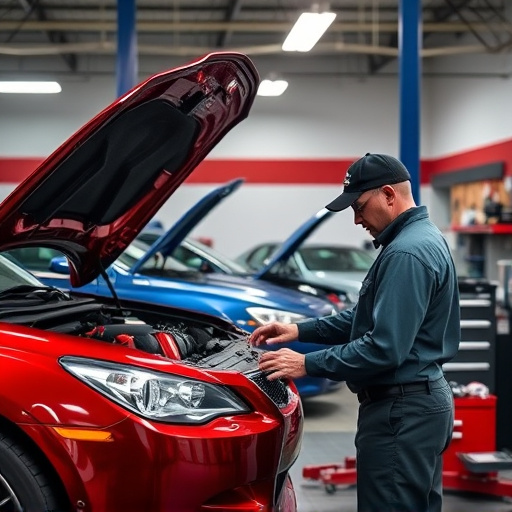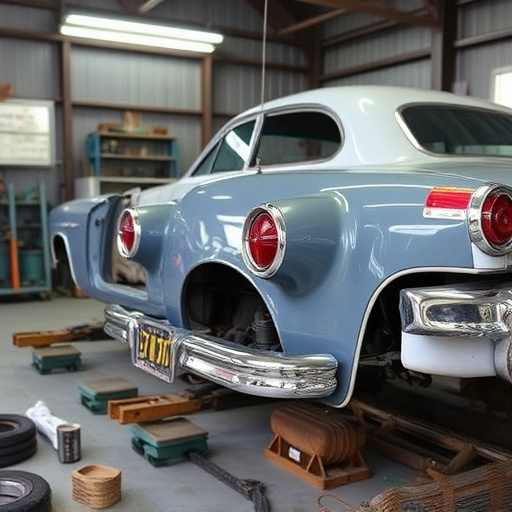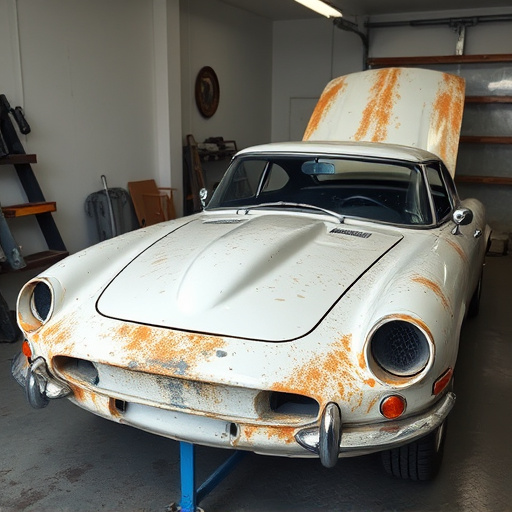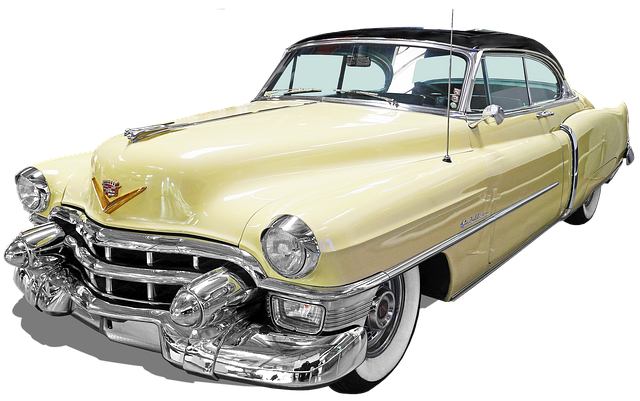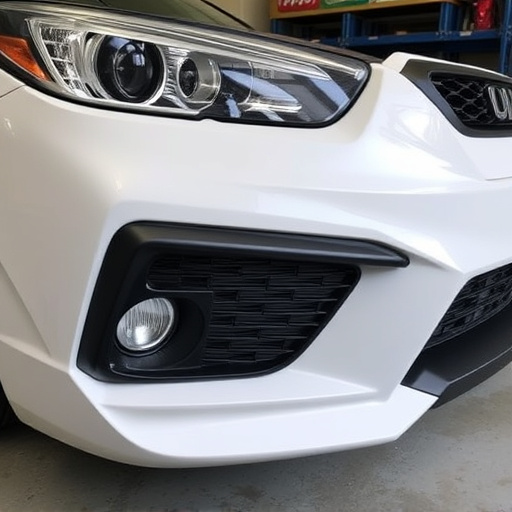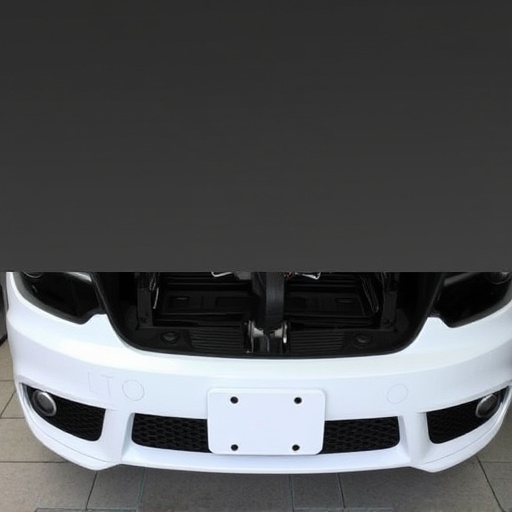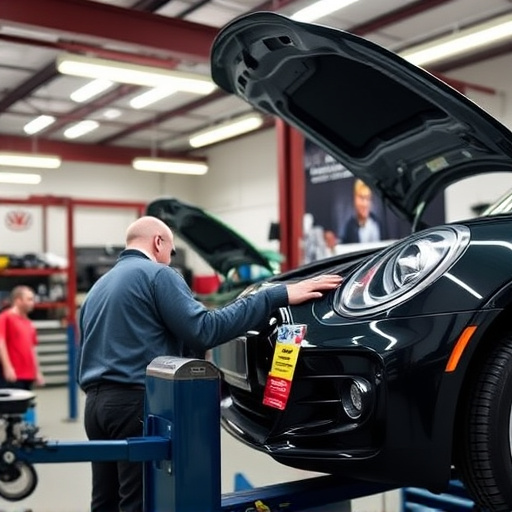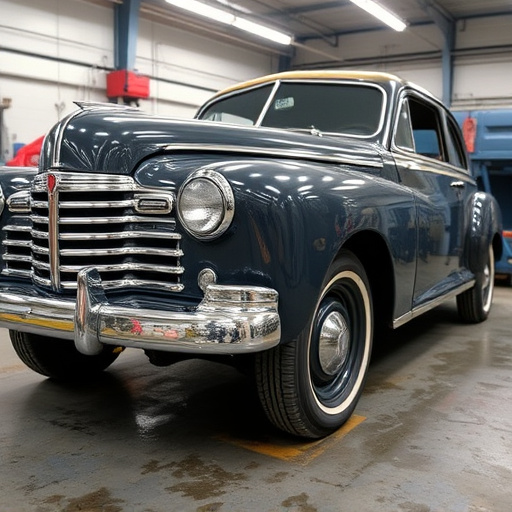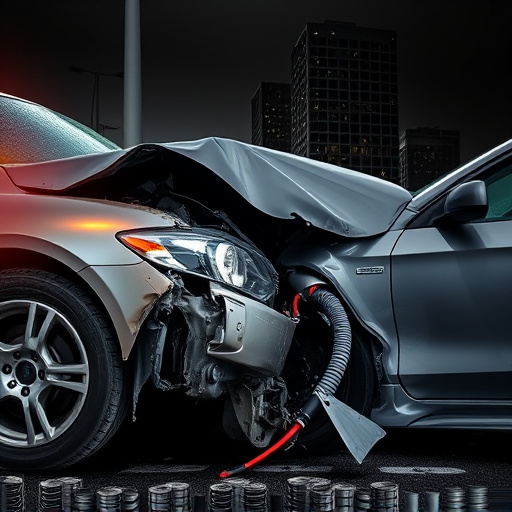The Mercedes rear light assembly is a complex system integrating taillights, turn signals, brake lights, and reverse lights, vital for safety and visibility. Seamless integration with advanced driver assistance systems (ADAS) ensures features like adaptive cruise control and automatic emergency braking function accurately. Proper repair or car paint repair restores functionality and aesthetic appeal. Integrating the rear light assembly requires precise alignment, meticulous paint preparation, and synchronization with ADAS for optimal performance and safety.
Mercedes rear light assemblies are not just components; they’re integral safety systems. This article delves into the intricate process of integrating these assemblies with Mercedes’ advanced driver assistance systems (ADAS). We explore the key components, address integration challenges, and highlight technical considerations for seamless synchronization. By understanding these systems, we emphasize enhanced safety on the roads, ensuring Mercedes vehicles remain at the forefront of automotive technology.
- Understanding Mercedes Rear Light Assembly Components
- Integration Challenges and Technical Considerations
- Enhancing Safety: Systems Synchronization and Testing
Understanding Mercedes Rear Light Assembly Components
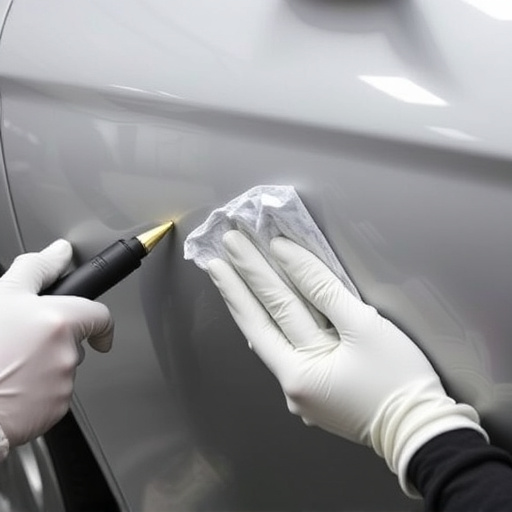
The Mercedes rear light assembly is a complex system composed of various components designed to enhance safety and visibility. This assembly includes taillights, turn signals, brake lights, and reverse lights, each playing a crucial role in ensuring drivers and pedestrians are aware of the vehicle’s presence and intentions. The taillights provide bright illumination, making it easier for other drivers to judge the vehicle’s speed and position during low-light conditions or at night. Turn signals, operated by the driver, communicate the vehicle’s direction changes, while brake lights and reverse lights serve as critical alerts for sudden stops or backing up.
Integrating these components seamlessly with Mercedes’ safety systems is essential. Modern vehicles, including Mercedes models, incorporate advanced driver assistance systems (ADAS) that rely on accurate sensing and communication from exterior lights. For instance, adaptive cruise control, lane-keeping assist, and automatic emergency braking systems all benefit from well-functioning rear light assemblies. In the event of damage or malfunction, proper vehicle bodywork repair or even a full car paint repair might be necessary to restore both aesthetic appeal and safety functionality to the Mercedes rear light assembly. Vehicle restoration techniques can also be employed to bring damaged or outdated components back to their original condition, ensuring optimal performance and visibility.
Integration Challenges and Technical Considerations
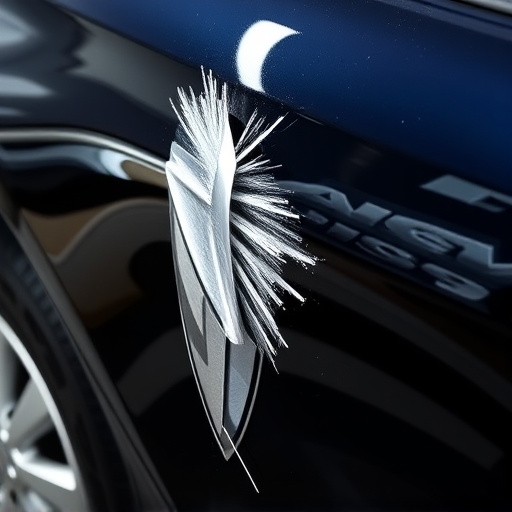
Integrating a Mercedes rear light assembly with safety systems presents unique challenges for automotive technicians, especially when dealing with modern vehicles. The intricate nature of contemporary cars demands precise alignment and connection to ensure optimal performance and safety. One of the primary considerations is achieving seamless compatibility between the new assembly and existing electrical and mechanical components. Any misalignment or faulty connection could compromise the overall effectiveness of the vehicle’s braking and turning signals, which are critical for road safety.
Furthermore, technicians must account for potential issues arising from paint preparation and finish during the installation process. Even minor scratches or imperfections in the paintwork can affect the assembly’s aesthetics, particularly in high-end vehicles like Mercedes. Therefore, meticulous attention to detail is required throughout the integration process, encompassing collision repair, scratch repair, and ensuring a flawless classic car restoration, if applicable.
Enhancing Safety: Systems Synchronization and Testing
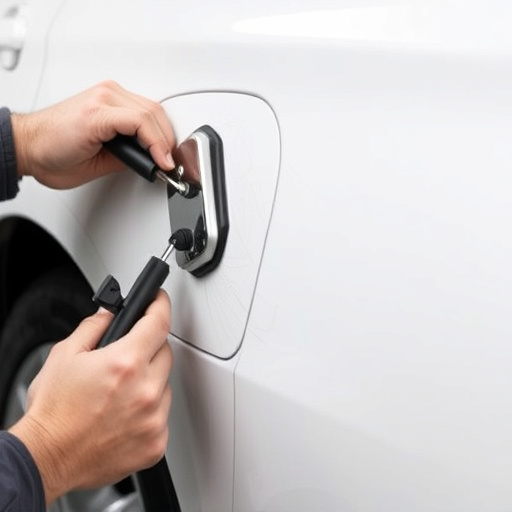
The seamless integration of a Mercedes rear light assembly with its safety systems is paramount for enhancing overall vehicle safety. This intricate process involves meticulous synchronization and rigorous testing to ensure that every component functions harmoniously. Modern Mercedes cars are equipped with advanced driver-assistance systems (ADAS) that rely on precise lighting cues, making the rear light assembly not just a cosmetic feature but a critical safety element.
During the integration phase, auto body services specialists must pay close attention to the electrical wiring and signal transmission between the lights, sensors, and control units. The synchronization ensures that braking lights, turn signals, and other indicators are accurately coordinated with the vehicle’s safety features, such as emergency brake assistance and lane-keeping systems. Paintless dent repair techniques can be employed to ensure the structural integrity of the rear light assembly without compromising its aesthetic appeal, contributing to a smoother driving experience and improved safety performance.
The seamless integration of a Mercedes rear light assembly with its safety systems is a complex yet vital process. By understanding the intricate components, addressing integration challenges, and prioritizing safety through synchronized systems testing, modern vehicles like Mercedes can offer enhanced safety features on the road. This ensures that every aspect of the rear light assembly contributes to a safer driving experience without compromising aesthetics or performance.

